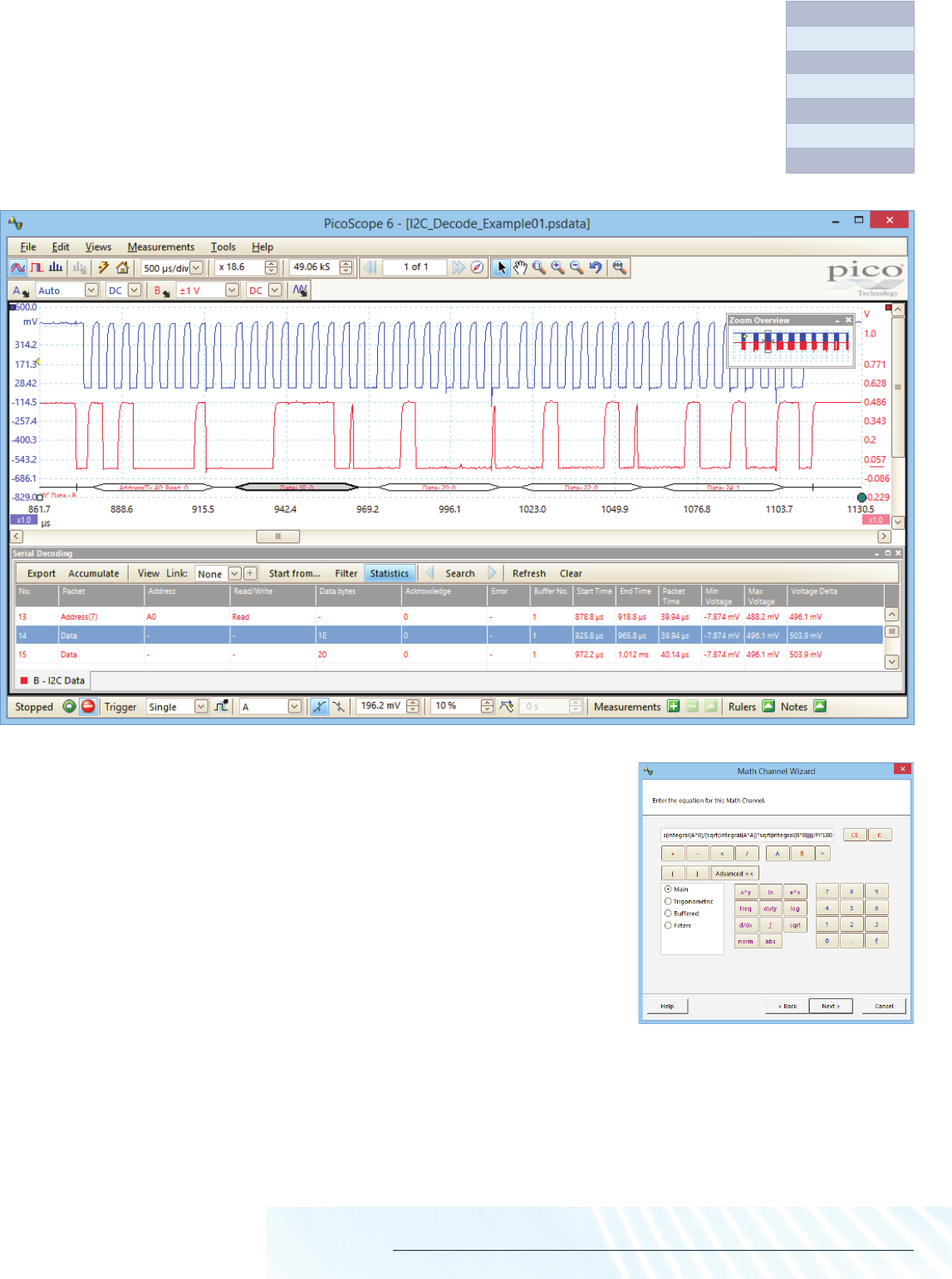Datasheet

PicoScope 2200A Series
Serial decoding
The PicoScope 2200A Series oscilloscopes include serial decoding capability as standard. The decoded data can
be displayed in the format of your choice: in view, in window, or both at once.
• In view format shows the decoded data beneath the waveform on a common time axis, with error frames
marked in red. These frames can be zoomed to investigate noise or distortion.
• In window format shows a list of the decoded frames, including the data and all flags and identifiers. You
can set up filtering conditions to display only the frames you are interested in, search for frames with specified
properties, or define a start pattern to signal when the program should list the data.
It is also possible to create a spreadsheet to decode the hexadecimal data into user-defined text strings.
High-speed data acquisition and digitizing
The supplied drivers and software development kit allow you to both write your own software and interface to popular third-party
software packages such as LabVIEW and MATLAB.
The drivers support data streaming, a mode that captures gap-free continuous data over the USB port directly to the PC’s RAM or hard
disk at a rate of 1 to 9.6 MS/s, so you are not limited by the size of the scope’s buffer memory. Sampling rates in streaming mode are
subject to PC specifications and application loading.
Serial protocols
UART/RS-232
SPI
I
2
C
I
2
S
CAN
LIN
Math channels
With PicoScope 6 you can perform a variety of mathematical calculations on your input
signals and reference waveforms.
Use the built-in list for simple functions such as addition and inversion, or open the
equation editor and create complex functions involving trigonometry, exponentials,
logarithms, statistics, integrals and derivatives.










